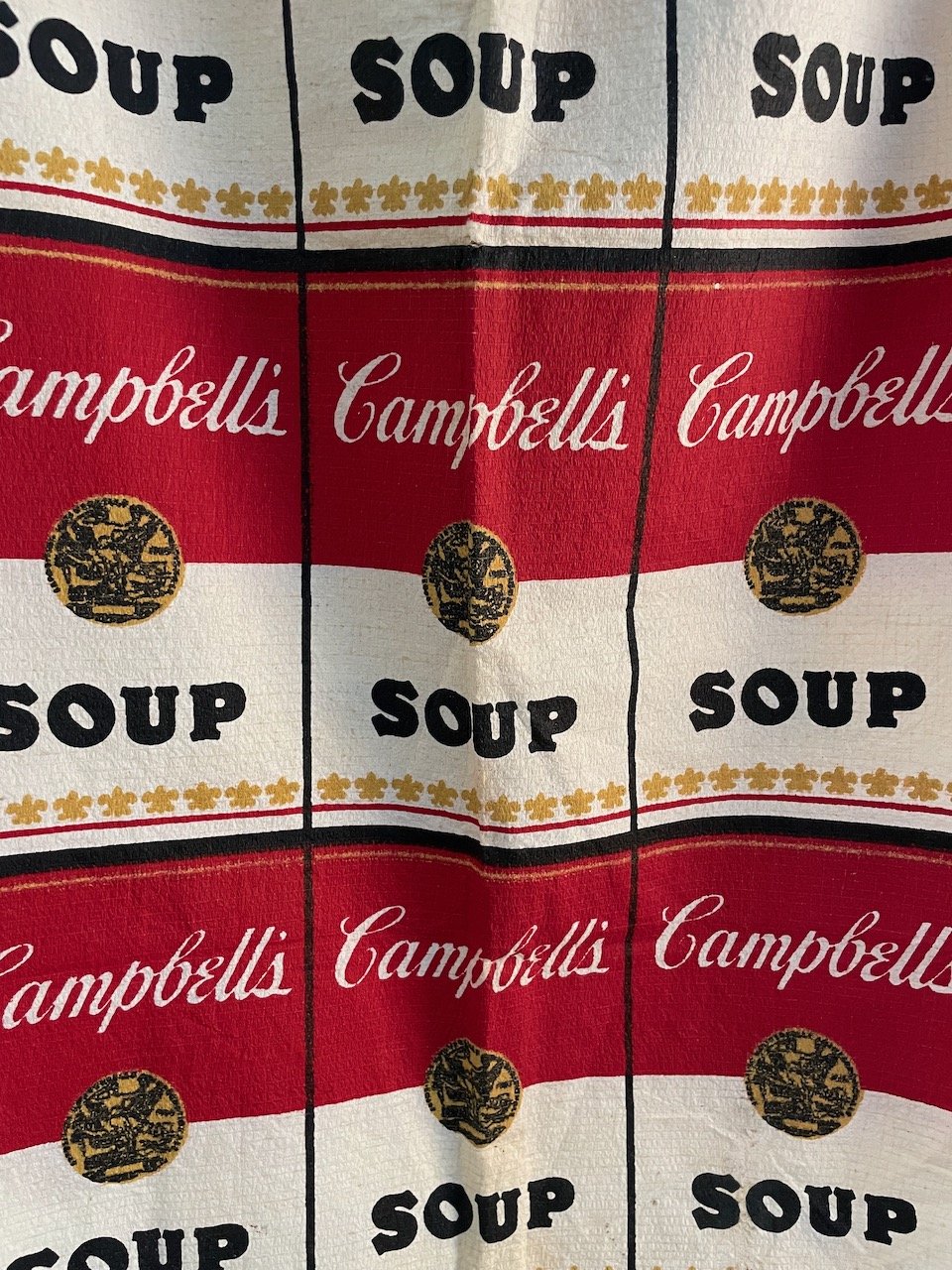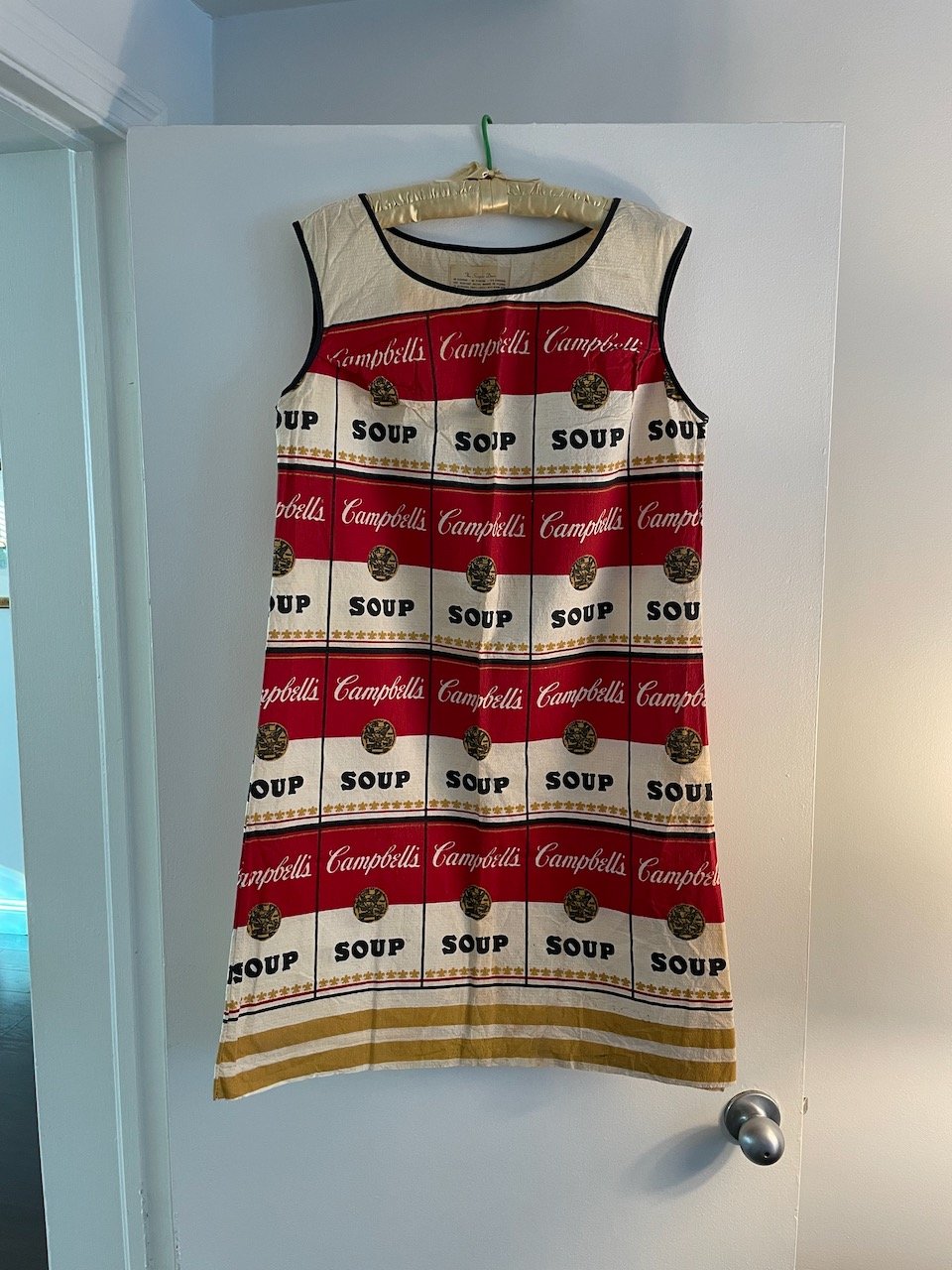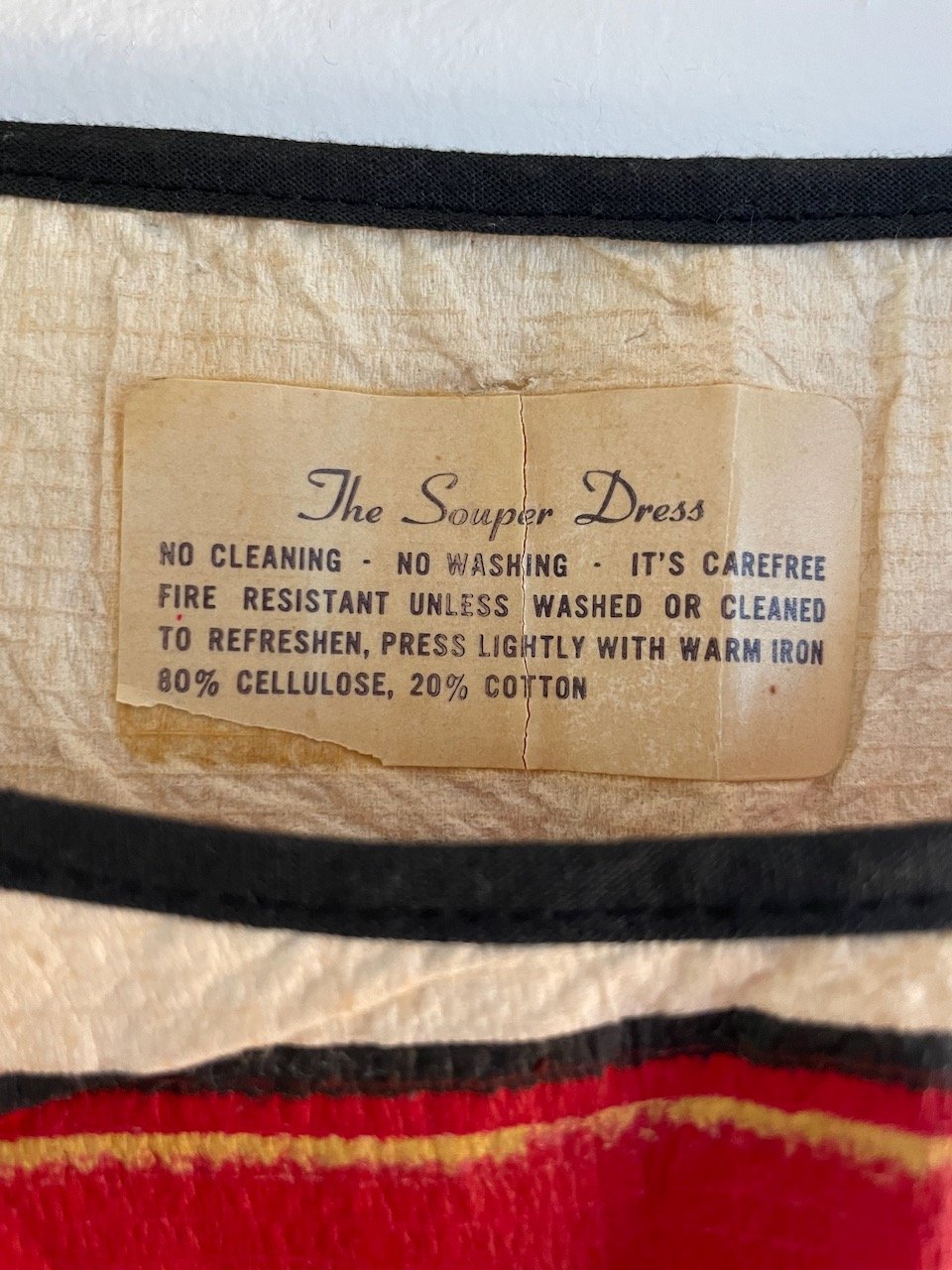


Your Custom Text Here
Cellulose/cotton paper, 1966/67 with label. 37 x 24 inches.
As art historian Marco Livingstone has stressed, Pop Art was never a circumscribed movement with membership and manifestos. Rather, it was a sensibility emergent in the 1950s and rampant in the 1960s. Andy Warhol (who began his career as a fashion illustrator) had been painting Campbell's soup cans since 1962. Such advertising icons, along with cartoons and billboards, yielded a synthesis of word and image, of art and the everyday. Fashion quickly embraced the spirit of Pop, playing an important role in its dissemination. The paper dresses of 1966 - 67 were throwaways, open to advertising and the commercial.
-The Metropolitan Museum of Art
Cellulose/cotton paper, 1966/67 with label. 37 x 24 inches.
As art historian Marco Livingstone has stressed, Pop Art was never a circumscribed movement with membership and manifestos. Rather, it was a sensibility emergent in the 1950s and rampant in the 1960s. Andy Warhol (who began his career as a fashion illustrator) had been painting Campbell's soup cans since 1962. Such advertising icons, along with cartoons and billboards, yielded a synthesis of word and image, of art and the everyday. Fashion quickly embraced the spirit of Pop, playing an important role in its dissemination. The paper dresses of 1966 - 67 were throwaways, open to advertising and the commercial.
-The Metropolitan Museum of Art